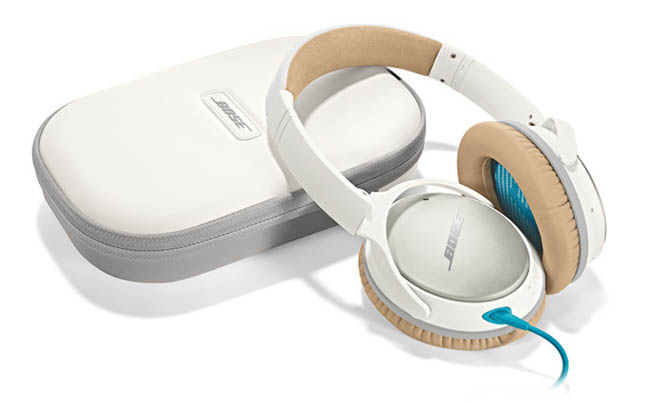This article is more than 1 year old
Fancy a mile-high earjob? We've had five!
Our correspondent gives five noise-cancelling headphones a flight test
Review Yes, noise-cancelling headphones are useful in all manner of times and places, but they really shine during air travel by blocking some of the endless bass rumble that jet engines emit.

Make your flights less hum-drum with some noise cancelling headphones
Manufacturers know this and try to ensure their products will fare well in the air by adding bags or cases that make it easy to organise their wares for use within aluminium tubes. I do about a dozen long haul flights a year and try to take night flights whenever possible (my family and the Vulture South team deserve to have me around) so am keen for anything that makes my time in the air easier, and easier to recover from.
My first experience with noise-cancellers was with the Mutant MIG-NC102 – more on them later – that made a big difference despite being decidedly cheap and cheerful. Checking out some better models seemed a good idea to see (or hear) what I and you are missing out on.
Before I get to the tests, the basics.
Noise-cancelling headphones come in two flavours: active and passive.
Passive headphones use padding and cunning acoustics to block ambient sound. Just about all headphones do this to some degree. Passive noise-cancellers are engineered to do it better. We're not considering passive headphones in this review, because they're not as effective, or fun, as their active cousins.
Active noise-cancelling headphones work by sampling the ambient noise and pumping an inverted sound wave into your ear. The result is you think you're not hearing the ambient noise. Doing that trick needs some clever audio circuitry and a power source. Noise-cancelling headphones can therefore be a little on the bulky side, although the electronics required are small enough that size shouldn't matter.
Indeed, one can buy noise-cancelling earbuds that usually sport a USB-stick-sized dongle on the main wire. Nobody in their right mind wears earbuds for the duration of a long-haul flight, so we're leaving this category of product for another day, too.
Makers of noise-cancelling headphones make varying claims about their products, but the core thing to look for is the claimed reduction in decibels at different frequencies. Not that those specs make it into their manuals.
If you can find the data, know that inside a plane you'll have to cope with about 80 to 100 decibels. Planes make noise in a few ways – notably air flow over the fuselage and wings, mechanical engine noise and the noise of the hot gas engines emit – the frequencies of which are known to headphone-makers, who should therefore tune their devices accordingly.
Models intended for in-air use can add value by including an adapter for the odd three-pronged audio ports some airlines still use. Battery life is also important, as you don't want your cans conking out on a long-haul flight. Indeed, this may influence your choices as you'll be stuffed if your rechargeable cans run out of juice, although all of them claim double figures and then some. Even so, cans relying on AAA batteries at least give you the chance to add a fresh ones if you've remembered to pack some.
Also, keep in mind comfort, because if you struggle to sleep in the air you can do without cans that pincer your cranium into a headache. Price plays a part too. I've used list prices, but of course you'll be able to do better with a little effort.
Got it? Good. On with the reviews, from a pool of products that coagulated after I asked leading manufacturers for their products best-suited to air travel. Audio-Technica and Sennheiser did not respond to my requests. I'd have prodded it more, but I literally had a plane to catch as all the products listed here were tested in the air.
